Abstract
Each fall, millions of monarch butterflies across the northern US and Canada migrate up to 4000km to overwinter in specific mountain peaks in central Mexico. To track monarchs precisely and study their navigation, a monarch tracker must obtain daily localization of the butterfly as it progresses on its 3-month journey. And, the tracker must perform this task while having a weight in the tens of milligrams (mg) and measuring a few millimeters (mm) in size to avoid interfering with the monarch’s flight. This paper proposes mSAIL, 8 × 8 × 2.6 mm and 62 mg embedded system for monarch migration tracking, constructed using 8 prior custom-designed ICs providing solar energy harvesting, an ultra-low power processor, light/temperature sensors, power management, and a wireless transceiver, all integrated and 3D stacked on a micro PCB with an 8 × 8 mm printed antenna. The proposed system is designed to record and compress light and temperature data during the migration path while harvesting solar energy for energy autonomy, and wirelessly transmit the data at the overwintering site in Mexico, from which the daily location of the butterfly can be estimated using a deep learning-based localization algorithm. A 2-day trial experiment of mSAIL attached to a live butterfly in an outdoor botanical garden demonstrates the feasibility of individual butterfly localization and tracking.
1. Introduction
Animal migrators are critical ecosystem indicators because their long-distance travels, often on continental scales, integrate information over broad and diverse geographical locales and seasonal time scales. Tracking technologies have allowed us unprecedented access to these paths, offering insights not only into how migration works but also into how environments are changing and how species interactions are impacted by changing movements and distributions.15 However, currently, only the larger animal migrators can be tracked for significant portions of their migratory flight (e.g., Thorup et al.19). Long-term tracking devices require large amounts of energy and power for information processing and storage, and large transceivers and antennas for data transmission, all of which increase the size and weight of the system. This makes them unsuitable for insect migrators, which make up a large percentage of the total abundance of migrators (e.g., 2.1 billion birds between Europe and Africa versus 3.4 trillion insects over the southern United Kingdom alone).6 Insect migration detection has been limited to en masse detection by vertical-looking entomological radar (e.g., Chapman et al.3) or tracking for short periods of time or over short distances (e.g., Ware22). Thus, the ability to track small individual migrators over their entire migratory path will offer a tremendous advance in our understanding of migration biology, the impacts of changing climate on small migrators, and the effects of migrants on local and global ecosystems.
One of the most enthralling animal tracking stories has been that of the iconic eastern North American Monarch butterfly (Danaus plexippus). Each fall, millions of monarchs across the US and Canada migrate up to 4000 km to overwinter in the same cluster of mountaintops in central Mexico. In spring, these migrants mate and remigrate northwards to repopulate their northern breeding territory over 2–4 partially overlapping generations. Because each migrant monarch completes only part of this round trip and does not return to the overwintering site, this navigational task cannot be learned from the prior generation.
The number of monarchs completing the journey has steadily declined in the past decades, coincident with the decreased availability of their milkweed host plant. The US, Mexico, and Canada have invested tremendous resources into monarch conservation efforts, including enacting specific policy initiatives, public outreach programs, and habitat protection and restoration projects. The US invested over $11 million between 2015 and 2017 alone.12 Developing a tracking technology for monarchs can be key in these efforts, for instance through a detailed understanding of habitat use during migratory flight and dependence on weather conditions. Furthermore, it can significantly benefit animal research and agricultural and environmental science.
A monarch tracker must assure daily localization of the butterfly as it progresses on its journey while not interfering with its flight. As such, any deployed sensor must perform this task while having a weight in the tens of milligrams (mg) and measuring a few millimeters (mm) in size. The conventional method for determining location is to use GPS. However, the received signal from the satellites is very weak (–155 dBm) and hence requires a power-hungry, very low noise amplifier (e.g., 25 mW by Mediatek MT3339). To power such a system requires, at minimum, a coin cell-sized battery which by itself already weighs ~200 mg. Furthermore, the GPS carrier frequency of 1.58 GHz requires a relatively large, centimeter (cm) scale antenna. As a result, the smallest commercial GPS (PinPoint by Lotek Wireless) has a total weight of 1.1 g and a size of 5 cm.5 An alternative to GPS is the Motus system17 which uses a radio beacon with tens of km transmit distance attached to each specimen combined with geographically distributed receive towers. However, while receive towers are relatively dense in Ontario and along the eastern seaboard, there are very few along the primary monarch migration region in the Midwest. Also, they require a long antenna (multiple cm) and have a weight >230 mg, which likely significantly impedes monarch flight.8 Finally, daylight trackers were proposed to compute location based on sunrise/set times (e.g., Intigeo by Migrate Technology). However, their data readout requires physical access to the sensor which is impractical in the case of the monarch migration. Furthermore, their size/weight (320 mg and 12 × 5 × 4 mm) remain well beyond that required for the monarch and, with only daylight-based sensing, location accuracy is limited, especially during the equinox.
We propose a new wireless sensing platform, mSAIL (Figure 1), specifically designed for the monarch migration study based on previously developed custom-designed ICs. mSAIL is an energy-harvesting, 62 mg device with an 8 × 8 × 2.6 mm form factor (including antenna), that (1) simultaneously measures the light intensity and temperature using non-uniform temporal sampling; (2) compresses the recorded data in 16 kB memory; and (3) wirelessly communicates data up to 150 m distance using a crystal-less radio at the overwintering site in a realistic non-line of sight (NLOS) scenario to custom-designed gateways. An integrated, chip-size battery, continuously recharged using a custom-designed light-harvesting IC with eight photovoltaic (PV) cells, provides energy autonomy.
2. Monarch Migration Tracking Application Scenario
mSAIL records light intensity and temperature with accurate, 32 kHz crystal-based timestamps along the monarch migration path. Standard light-based locationing determines the sunrise and sunset time using a light intensity threshold and then determines the geolocation using a Sun-Earth system model and Lambertian Law. The day length and center time depend on the geolocation and date and have been used in long-term larger animal tracking studies.13,16 However, it has the fundamental limitation of large latitude ambiguity around the equinox (September 22 and March 20) when the day length is the same regardless of latitude. A second challenge is the significant light intensity variation due to weather and terrain that an ideal sunlight intensity model is unable to capture.
mSAIL adopts a novel data-driven algorithm for monarch migration tracking that leverages the principle of correlating multiple sensors. It achieves superior accuracy by applying deep neural network (DNN) models and multimodal fusion to effectively combine multiple sensor readings, including light intensity and temperature. The objective of the DNN approach is to identify the cross-correlation between the multimodal readings and the sunlight intensity pattern as well as temperature information on a particular date. Different from Lam et al.9 which utilize handcrafted models for light intensity and temperature, the DNN approach learns an implicit, yet more complicated model from real sensor measurements, which makes it more robust to local variations.
Although the details of the trajectory are not known, the final destination of the monarch migration is known. Overwintering monarchs will distribute over a limited number of sites within central Mexico with 21–78% of the total population reliably congregating at a single site (El Rosario sanctuary, at the Monarch Butterfly Biosphere Reserve) each year.21 mSAIL nodes will be programmed with a predefined rendezvous time to start wireless data offloading to multiple gateways deployed at that overwintering site. This scenario allows retrieval from both fallen (dead) and live monarchs as long as they are within the communication range. Since an estimated ~90% of monarchs survive at the overwintering site,2,18 the data recovery rate is expected to be significantly improved compared with current paper tagging methods1,23 that can only access fallen (dead) or fortuitously recovered butterflies. After a gateway retrieves the data log from an mSAIL, the entire butterfly trajectory can be constructed using the DNN localization algorithm proposed by Yang et al.24 The DNN is trained and evaluated by the data collected through a data measurement campaign with 306 volunteers from 2018 to 2020 across the US, Canada, and Mexico. They recorded light intensity and temperature using commercial cm-scale sensors (Onset MX2202) as an emulation of mSAIL during the monarch migration season. The localization algorithm24 shows a geocoordinate accuracy of <0.6° and <1.7° in longitude and latitude respectively (1° is ~85.2 km in longitude and ~111.2 km in latitude in the midwestern US), which is sufficient for monarch studies.
3. Small form Factor Integration
This section discusses how mSAIL achieves an mm- and mg-scale form factor using 3D stacked custom ICs, batteries, and PCB antenna. mSAIL measures 8 × 8 × 2.6 mm and 62 mg to not interfere with monarch flight, while still providing necessary features as a complete system. It consists of three main parts: stacked IC layers, a PCB, and discrete components.
3.1. Stacked custom IC layers
mSAIL consists of a family of bare-die (without packaging) IC layers. Figure 2 shows the layers: a PV cell IC, a ULP processor, and memory IC, ULP temperature and light sensor ICs, a ULP RF transceiver IC, and a battery/power management IC, which were all custom-designed, fabricated, and thinned. Three custom-designed, thin-film batteries (CYM-BET) are also stacked as additional layers. To minimize the total system volume, the layers are stacked on top of each other and connected by bonding wires. The layers communicate using a custom low-power protocol called mBus.14
3.2. PCB and antenna design
mSAIL places the IC stack on a PCB (Figure 3) with a dimension of 8 × 8 × 0.1 mm, fabricated in a Rogers 4350B material. The weight of the PCB is reduced to 19.5 mg with a large opening in the center of the single loop trace antenna, which takes 38% of the PCB area. In addition to the IC layers, the PCB integrates two 4.7 µF and one 1.3 pF ceramic capacitors for the RF transceiver and a small 32 kHz crystal (1.3 × 1.1 mm, 2 mg), used by the processor layer for system timekeeping.
3.3. System integration and encapsulation
mSAIL integrates 12 layers, two 4.7 µF capacitors for RF communication energy buffers, one 1.3 pF capacitor for RF frequency selection, and a 32 kHz crystal on the PCB. They are electrically connected by PCB traces and bonding wires. The ULP ICs are stacked without conventional chip packaging (i.e., bare-die) after thinning, saving weight and size but rendering them extremely sensitive to light, and the bonding wires are very fragile. Thus, they must be properly encapsulated to provide physical protection and block light. At the same time, the PV cell layer must be exposed to light to perform energy harvesting and light level measurement. To address these simultaneous integration constraints, the PV cell layer is placed on top of the other layers for access to light. The bottom layers are encapsulated with hard, black epoxy to provide physical protection and block light from reaching the sensitive electronics. The top PV cell layer is covered by a clear epoxy to expose the PV cells to light. Below the PV cell layer, the spacer layer coated with aluminum blocks lights coming through the PV cell layer. A silicone mold ensures the epoxy only surrounds the layers to not increase the total weight. Thus, its weight contribution is reduced to 27.9 mg, which is a 5.9× reduction compared to if the epoxy had covered the entire PCB area. Finally, the entire mSAIL is coated by parylene, which is biocompatible, blocks moisture, and electrically isolates conductive points on the PCB from the environment.
After encapsulation, mSAIL is programmed via optical communication using a portable LED shining on the exposed PV cells. The processor layer decodes on-off-key modulated (0.8 kbps) commands and programs the system accordingly.
4. Energy Autonomous Operation
mSAIL uses its PV cells to sustain the charge of its integrated batteries during the 3-month migration which has sufficient energy to power the wireless data transmission at the overwintering site. The system must minimize energy consumption since the mm-scale batteries only store 18 µAhr of charge and the mm-scale PV cells only recharge the battery with 100 nW–20 µW from 400 lux to 30k lux. The battery can only sustain 49 minutes if mSAIL continuously operates in active mode without careful energy management.
4.1. Dynamic operation modes
mSAIL optimizes energy consumption by employing three different operation modes: active, sleep, and radio. In active mode, it measures temperature, triggers light measurement, processes, stores, and time stamps measured data, and reconfigures the power management unit for optimal efficiency. The active mode consumes 22 µA on average running for a duration of 1.2 seconds. For power reduction, the sleep mode turns off all circuits except for essential blocks: the 32 kHz crystal oscillator, the volatile SRAM memory, the light sensor, and power management. Also, it reduces the DC-DC converter clock frequency from 588 kHz to only 370 Hz to maintain a high power conversion efficiency of 66% at 56 nA sleep mode current (29× efficiency reduction compared to if kept constant). mSAIL is in sleep mode from 98.0% around sunrise/set to 99.8% at the center of day and night. Due to the large period ratio of 150:1 between the sleep and active modes, the overall system energy consumption is substantially determined by the sleep mode.
After the monarch arrives at the overwintering site, mSAIL will wirelessly transmit all the stored data to a gateway at the predefined rendezvous time, consuming 130 µW on average. This consumes 211 mJ over 27 minutes, which must be supported by the integrated battery with an energy capacity of 259 mJ. During the transmission, the processor monitors the batteries and if they cannot support the entire data transmission, mSAIL waits for the batteries to be charged to 3.9 V (detected by an integrated ADC) and then transmits the remaining data at the next rendezvous time.
4.2. Ambient light energy harvesting
mSAIL generates high voltage by electrically connecting eight custom-designed PV cells in series and directly charging the batteries without any circuit operation or switching loss. The number of PV cells is set eight to place their effective maximum power point at a relatively low light level (500 lux–2 klux) so that energy harvesting is supported at these low light levels.10 At stronger light levels, the harvesting efficiency decreases, but the absolute harvestable energy is much greater. While mSAIL could benefit from a large charging current at strong light, its energy harvesting efficiency is optimized at a low light level to maximize the acceptable light range for energy harvesting. The battery voltage does not increase beyond 4.2 V because an over-charging protection circuit stops the energy harvesting, protecting the ICs as well as the battery.10 At very low light levels (<100 lux), the energy harvester cannot provide enough voltage to charge the batteries and imposes a risk of discharging the battery instead. To prevent this problem, a diode is inserted between the batteries and the output node of the PV cell layer.10 This results in a harvesting efficiency loss of 7% from the voltage drop across the diode during energy harvesting, which is easily compensated by the improved efficiency from not having an active up-converter.
5. Data Management
Due to the silicon area constraint, mSAIL has a limited data storage capacity of 16 kB in custom ULL SRAM for the 3-month journey. For the DNN sensor fusion localization algorithm,24 measurement intervals of 1 and 32 minutes are desired for light and temperature, respectively. Temperature changes are gradual so the required measurement interval is much longer than the light recording interval since light levels can vary rapidly with weather or shading, and change exponentially around sunrise/set time. Since the temperature and light sensor outputs are encoded with 24 and 48 bits per measurement, respectively, storing raw data would require 772 kB of SRAM to store all the measurement data during the migration period, which is well beyond the 16 kB storage capacity. Thus, mSAIL reduces the data storage requirement by compressing the data using Huffman-coded, log-scale encoding with a nonuniform sub-sampling scheme guided by dynamic sunrise/sunset time tracking. The proposed data compression also reduces energy consumption for wireless data transmission at the overwintering site.
5.1. Dynamic sampling rate
The localization algorithm requires a light profile for the entire day.24 However, temporal resolution around sunrise and sunset, where intensity level changes exponentially, is more critical. To reduce the power consumption and required memory space, mSAIL reduces the number of measurements by dynamically controlling the sampling rate. It measures the light every minute for 3 hours around sunrise and sunset and every 32 minutes otherwise, which reduces the storage size by roughly 4×. Data during the night is assumed to be 0 lux and is not stored. In addition, after the 3-hour window of 1-minute interval measurements is obtained, mSAIL further sub-samples light measurements by applying gradually increasing sampling intervals. From the time when the light level crosses a threshold (e.g., 2 lux) and moves toward the center of the day, it stores 4 samples at 1-minute intervals, 8 samples at 2-minute intervals, 4 samples at 8-minute intervals, and the rest of the 3-hour window are stored at 32-minute intervals (Figure 4). This further reduces the storage requirement by 10×, without noticeable localization accuracy degradation (Section 7).
5.2. Sunrise and sunset tracking
To perform the proposed dynamic subsampling, mSAIL must track sunrise and sunset times which will change as the butterfly travels. Without dynamically tracking sunrise/ set, 14 hours per day of 1-minute measurements would be necessary to cover all the possible sunrise/set times across different locations during the migration. Such a large window of high-frequency measurement results in longer active times for processing data and higher energy consumption.
mSAIL predicts the sunrise and sunset times each day based on the previous day. We limit our discussion in this section to sunrise times for brevity, but the method applies similarly to sunset. The model can be described by the equation Tn = Tn−1 + ΔTlocal + ΔTglobal where Tn is the time the light level crosses the threshold on day n. ΔTlocal describes the local changes in sunrise time and light levels had the butterfly not traveled; this contains the changes from seasonal, weather, and shading variations. ΔTglobal describes the changes in sunrise time due to the global displacement of the butterfly. ΔTlocal can be measured by the difference in the sunrise times between consecutive days at the same location in the reference volunteer dataset24 shown in Figure 5. We can pick 30 minutes as a reasonable upper bound of ΔTlocal based on Figure 5, whereas ΔTglobal can be determined analytically. The maximum reported speed of a monarch butterfly is 265 miles per day.20 This is a conservative estimate—a more typical value would be 50–100 miles per day. At 45 °N, 265 miles corresponds to about 5.5 degrees in latitude which shifts the sunrise and sunset times by ±22 minutes in the worst case assuming that the butterfly travels only in the east-west direction. Therefore, |ΔTlocal| ≤ 30, |ΔTglobal| ≤ 22, and Tn = Tn−1 ± 52 holds. And if the 1-minute light measurement window is set to ±52 minutes before and after the previous sunrise time, it is guaranteed to capture the next sunrise. The recorded samples require an additional 54 minutes after sunrise and, hence, the total window is set to 1 hour before and 2 hours after the previous sunrise time.
5.3. Data compression
The dynamic sampling rate reduces the number of data points down to ~100 light and 48 temperature samples per day. Each raw light and temperature measurement is 48 and 24b long, respectively. To compress both light and temperature data with the limited instruction code space and computational complexity, a compact lossy compression algorithm is applied to convert the integer data into an approximated log2 representation with fixed-point precision without using a large lookup table. Log2 representation is suitable for the light data as it changes exponentially around sunset/rise time. After compression, all the data for 90 days occupies 15.7 kB of mSAIL memory.
Finally, data is further compressed by storing only the difference from the previous data. During sunrise and sunset, log-scale light intensity samples change by a relatively small amount (typically 1 or 2 bits). A Huffman coding7 is applied to this difference to produce the minimum codeword length. The combined encoding scheme further reduces a light measurement to 5.1b and a temperature to 3.0b on average. A simulation on the volunteer-collected data shows that only 7.2 kB SRAM is required to store 3-month data including overhead, which is acceptable for the mSAIL.
5.4. Data packets for RF communication
During wireless data retrieval, each packet is separately transmitted and contains 96b including 16b of CRC and a 12b packet header. The remaining 68b store the data. To reduce overhead, four packets are grouped together (272b data) as an independent decodable unit. Each unit storing light measurements includes a 17b timestamp (with resolution down to 1 min) and an 11b initial measurement value (necessary for differential decoding). Units storing temperature measurements include a 13b timestamp (with resolution down to 30 min) and a 7b initial measurement. The remaining light and temperature measurements are stored as an encoded difference from the previous measurement as described in Section 5.3. The remaining timestamps are omitted as they are calculated at the gateway since the light and temperature intervals are deterministic, though non-uniform. Once mSAIL reaches the overwintering destination (inferred by the rendezvous time), mSAIL adds on the packet number and CRC to each unit to create four 96b packets for transmission. The CRC enables multi-bit detection of erroneous packets in the receiving gateway. Although a missing packet cannot be recovered, the earlier packets can still be decoded using the timestamp and initial data stored in the first packet even if later packets are lost. Also, since mSAIL will periodically retransmit its data, lost packets can be recovered on subsequent data transmissions.
6. Wireless RF Communication
Using a ULP RF transceiver without an RF-reference crystal (10 MHz range) and PLL4 is necessary to enable mm-scale system integration and also ultra-low power consumption, but it unavoidably sacrifices the frequency stability of the RF signal. To address this, the system employs a gateway-assisted synchronization protocol that is initiated by mSAIL node transmission. In the proposed protocol, an mSAIL node asynchronously initiates a communication session by transmitting a packet first. Around the rendezvous time, the gateway continuously listens to the channel to estimate and track the carrier frequency and sampling frequency offsets (CFO and SFO) of the mSAIL node via a computationally efficient 2D-FFT-based correlation. Upon detecting a valid packet from an mSAIL node, the gateway can send a customized packet that pre-compensates the CFO/SFO of the detected mSAIL node. This enables a PLL-less mSAIL node implementation which eliminates the need for power-demanding synchronization & correlation processes at the mSAIL node. The gateway protocol and real-time baseband signal processing are implemented on the FPGA (ADRV9361-Z7035) of a custom gateway (USRP X310 compatible, Figure 9). This asymmetric link between the gateway and mSAIL takes advantage of excellent receiver sensitivity and abundant FPGA resources for digital signal processing in the gateway, allowing the mSAIL transceiver to be simple, low power, and mostly asleep.
A major issue of using an mm-scale battery for mSAIL is its high internal resistance, which prevents drawing a large peak current (mA range) to transmit RF signals. Note that prior crystal-less transceiver designs such as Maksimovic et al.11 do not have the same issue as they operate with a conventional battery without extreme size and weight constraints. We tackle this current limitation issue of the mm-scale thin-film battery by powering the transceiver with a trickle-charged energy buffer capacitor, as shown in Figure 6. The proposed system exploits this sparsity to realize an energy-efficient sparse pulse position modulation (PPM) scheme. Unlike conventional PPM, the symbol duration is dominated by the recharging time. mSAIL uses a binary sparse-PPM with 2.25 mW active transmit power (at ≈ 15% circuit efficiency), 50 µs pulse duration, and 4.8 ms recharging time for 0.2 kbps data rate at an average power consumption of 156 µW during the packet transmission.
The main challenge in the gateway design is to identify the CFO and SFO with the mSAIL node in real-time. On the mSAIL RF transceiver, the baseband sampling clock is generated by an RC relaxation oscillator4 and its carrier frequency is determined by the inductance value of the 2D magnetic dipole loop antenna and the matching on-/off-chip capacitors without a PLL. Thus, it is inevitable that an mSAIL node has significant SFO (up to 0.5%) and CFO (up to 2%) variation due in part to variations in process, voltage, and temperature. Calculating accurate SFO/CFO and compensating these offsets in realtime is performed with the signal processing data path shown in Figure 7 implemented on the gateway’s FPGA.
The preamble from mSAIL always starts with an RF pulse train with a constant pulse interval. Thus, we propose a novel 2D-FFT-based process that identifies the SFO and CFO at the same time. The incoming signal is first divided into multiple time domain signal frames, whose length is equivalent to half of the pulse width. A 1D-FFT is performed on each signal frame and the signal power is computed for each frequency offset bin, which corresponds to a specific CFO hypothesis. A second FFT is then performed on the power of frequency domain samples (output of the first FFT) that belong to that same bin (one specific CFO). This process is repeated for all frequency bins. Each bin of the second FFT output now corresponds to a specific SFO fundamental frequency. To accurately estimate the actual pulse repetition frequency of the preamble, we add the power of all harmonic frequency bins corresponding to a specific fundamental frequency. Figure 8 shows an example of the 2D-FFT harmonic integration output from the preamble processing, where the y-axis corresponds to the CFO bin and the x-axis is the SFO fundamental frequency hypothesis. By finding the maximum power from the 2D-FFT result, the gateway identifies the SFO as well as the CFO at the same time. The CFO FFT resolution is matched to the signal bandwidth and inversely proportional to the preamble pulse width, which is 4–1000 µs in our system. Figure 8 is the result for 6.5 MHz CFO and 5 kHz SFO from the 915 MHz and 250 kHz ideal carrier and sampling frequencies (plotted with a coarser resolution to make the high power peak region visible). After the 2D-FFT process for the preamble, the gateway keeps tracking SFO during payload to eliminate residual SFO and to mitigate time-drifting offset. The SFO tracking resolution is 1/4 of the pulse width.
7. Evaluation
Various performance evaluations have been run on mSAIL systems as described in this section, including: (a) wireless communication distance evaluation at the overwintering site showing over 150 m NLOS distance and (b) 2-day outdoor live monarch demonstration including wireless data transmission, post-processing, and localization.
We performed flow-through CO2 respirometry on monarchs carrying a prototype mSAIL (compared to controls without the logger) to estimate the effect of the system load on flight metabolism. The test results showed neither a significantly different mass relationship from the control nor a significant change in flight metabolic rate. Because the data in this preliminary study was limited, further studies on the impact of long-distance flight and aerodynamics, as well as the robustness of the mSAIL over a 3-month period, are warranted and planned.
7.1. Wireless communication evaluation
The mSAIL radio transmission distance was tested at two locations. First, in an unobstructed outdoor environment, mSAIL was placed on a pole such that it was an average of 20 m higher than the gateway to emulate conditions at the overwintering site when a monarch will be in a tall conifer. The results of the test are shown in Figure 9(a). A 75 cm Yagi antenna with 11 dBi gain was attached to the gateway. The transmission was line-of-sight up to 494 m. A similar test was performed in a heavily wooded area at the overwintering site in Mexico, shown in Figure 9(b) using a 135 cm Yagi with 15 dBi gain which showed excellent results at 150 m with a low (<5%) packet loss. In both cases, the mSAIL was powered by attaching larger batteries using 10 mm leads to allow for longer operation duration under continuous radio transmission for ease of testing. However, in separate testing, this was shown not to impact radio distance noticeably.
Our approach leverages the fact that monarchs cluster at impressive densities at the Mexican overwintering sites. The median density estimate is 20 million butterflies (range 6–60 million) per hectare (10,000 m2).18 Therefore, even with hundreds of meters of communication range, we expect to cover millions of butterflies.
7.2. Live Monarch localization
Full system operation of mSAIL was demonstrated attached to a live monarch butterfly in a botanical garden, as shown in Figure 10. The butterfly is kept in an outdoor, 42 × 42 × 76 cm cage, positioned on a 2.5 m tall pergola such that the cage is not shaded by nearby buildings, on November 6th and 7th, 2020, which is during the monarch migration season. The monarch was able to feed ad libitum on butterfly nectar. For reference measurements, cm-scale sensors were placed in the cage and outside on the pergola. A receiving gateway with a 7” omnidirectional whip antenna was mounted 8 m away in a nearby enclosed structure to receive the transmitted data regardless of weather conditions.
Light and temperature measurement results. Figure 11 shows temperature data transmitted from mSAIL mounted on the monarch. Data is also shown for the cm-scale sensor mounted on the pergola, along with the difference between the two sensors’ measures. Temperature data agrees very well between 6 PM and 6 AM with differences of no more than 2°C. During primary daylight hours, both sensors can be exposed directly to sunlight which can cause large local heating compared to ambient shade temperatures. While the cm-scale sensor was mounted on the pergola, facing up, the mSAIL was attached to the monarch which, though caged, could change orientation with respect to the sun and also close its wings at times, thereby covering the sensor. Therefore, differences in daytime temperatures are expected. For these reasons, and because butterflies will travel during the day, only nighttime temperature readings (16 hours) are used in the DNN localization algorithm.
Figure 12 shows the 2-day light data from the same mSAIL system and the same cm-scale sensor. Note that mSAIL is programmed to gather light data only during daytime and sunrise/sunset intervals. Also, the cm-scale sensor’s minimum light reading is zero which cannot be plotted on the log scale. The data shows good agreement during sunrise and sunset times. Some of the differences during the daytime are the results of the difference in orientation between the fixed cm sensor and the mSAIL. The cm sensor always pointed upward while mSAIL orientation depended on the position of the monarch. However, the neural network localization algorithm mostly relies on measurements surrounding sunrise and sunset. In addition, in practice, measurements during the day are less relevant since the monarch could be traveling and, hence, not at a fixed location. In addition, to confirm the accuracy of the light readings, mSAIL was calibrated and tested with controlled light before the live monarch experiment. The resulting fit had an R2 value of 0.9982.
Localization from mSAIL collected data. The quality of our measurements was evaluated using the localization algorithm introduced by Yang et al.24 Although it is possible to apply different localization algorithms using mSAIL-collected data, we chose the same algorithm proposed by Yang et al.24 to evaluate its data quality compared to the output obtained from the reference commercial sensor (Figure 13).
For the live monarch mSAIL evaluation conducted on Nov. 6th and 7th in 2020, the light and temperature data were wirelessly retrieved from the mSAIL unit and the butterfly was localized using the above method. Note that mSAIL collected data was first decompressed and resampled to reverse the adaptive sampling and data compression described in Section 5. We then applied linear interpolation to resample decompressed mSAIL measurements so that they have the same sampling rate as the reference cm-scale sensors used in DNN training. We evaluate our 2-day measurements in a grid surrounding the ground-truth location with a range of [−15, 15] degrees in latitude and longitude and a resolution of 0.25 degrees. The likelihood (i.e., DNN outputs) for the grid points are visualized as heatmaps shown in Figure 14 where the center of the graph is the ground-truth location. It is observed that light intensity alone can provide accurate longitude estimation and that temperature significantly refines the latitude estimation. The maximum likelihood estimations marked in Figure 14 provide an absolute error of 0.07°/0.26° in longitude and 0.03°/0.40° in latitude for the first/second day, which translates to a maximum error of 21.4 km and 44.5 km in longitude and latitude and aligns with the accuracy reported by Yang et al.24 evaluated with the cm-scale sensors.
To validate that the proposed data compression and adaptive resampling technique does not degrade the localization accuracy, we applied the same compression and sampling technique to the volunteer cm-scale sensor data and compared the localization accuracy with the original uncompressed data. Figure 15 confirms that the proposed compression and dynamic sampling algorithm successfully captures the most relevant features, thus it exhibits negligible localization accuracy difference.
It is worth noting that the butterfly was stationary for the 2-day outdoor test and there can be differences between data collected from stationary vs. migrating butterflies. Analyzing the differences needs further investigation and it is left as future work.
8. Conclusion
This paper proposes mSAIL, 8 × 8 × 2.6 mm and 62 mg embedded system for monarch butterfly migration tracking with previously developed, custom-fabricated solar energy harvester, an ultra-low power processor, light/temperature sensors, and wireless transceiver ICs, all integrated within a 3D stacked form-factor. The proposed system is designed to record and compress light and temperature data during the entire 3-month migration path while harvesting solar energy, and wirelessly transmitting the data at the overwintering site in Mexico to reconstruct the complete migration trajectory using a deep learning-based sensor fusion localization algorithm. An initial 2-day trial experiment of mSAIL attached to a live butterfly demonstrates the feasibility of individual monarch butterfly localization and tracking using an electronic device for the first time.
Acknowledgments
We are grateful to the Monarch Butterfly Biosphere Reserve Director (Felipe Martínez Meza), staff, and community partners for granting access to the overwintering colony. We thank Dr. M. Isabel Ramírez and the students for assistance at the overwintering site. This work was funded in part by Monarch Butterfly Fund Flight Challenge, National Geographic, Mcubed, NSF DBI IIBR (#2045017 & #2043017), and NSF UNVEIL IOS (#1736249). The authors thank all volunteers for data collection from 2018 to 2021.


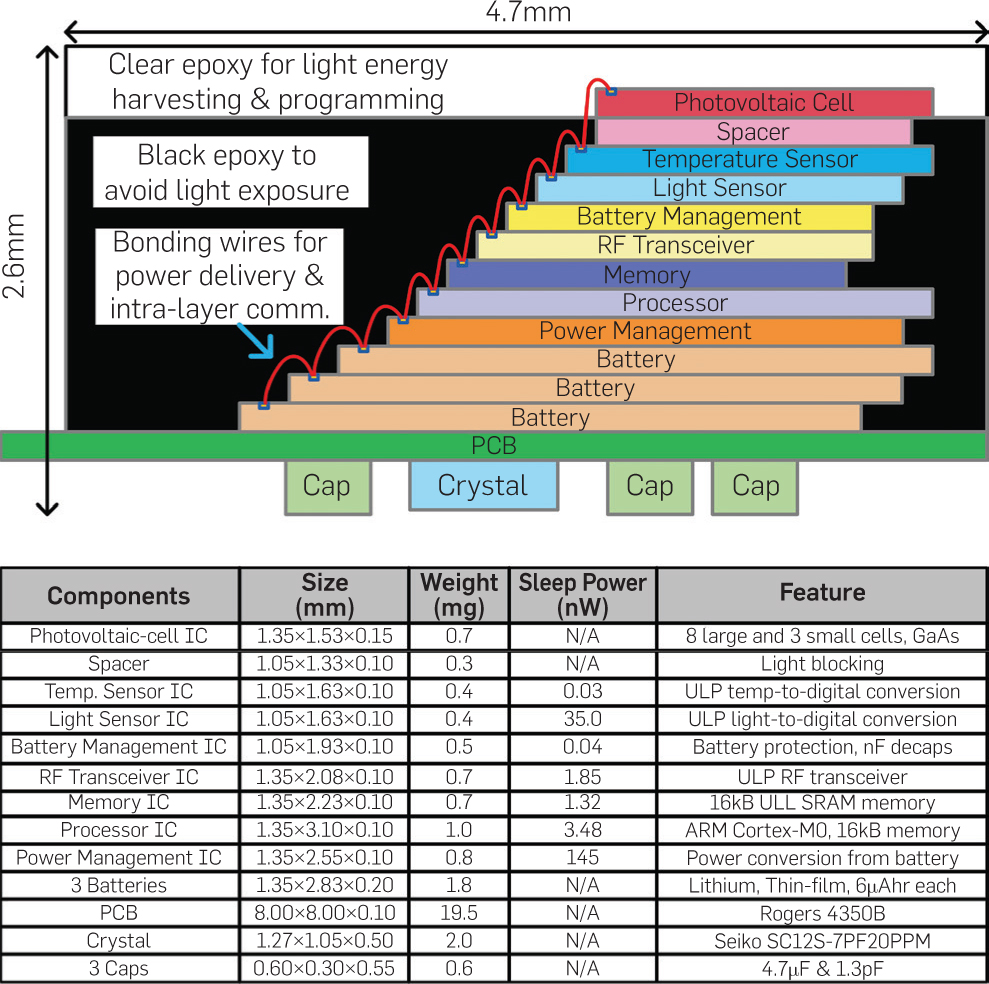
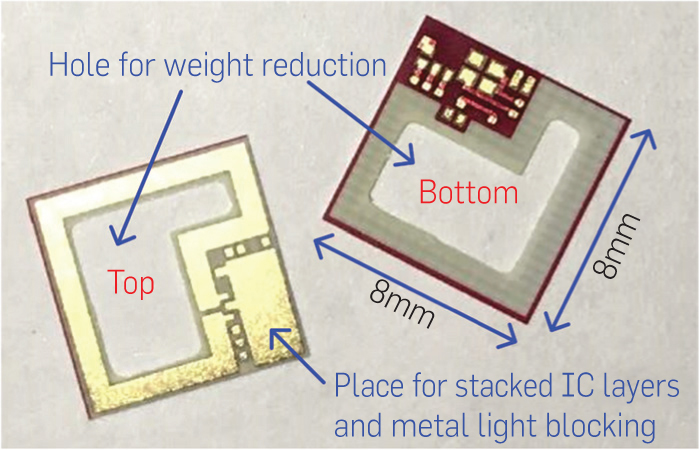
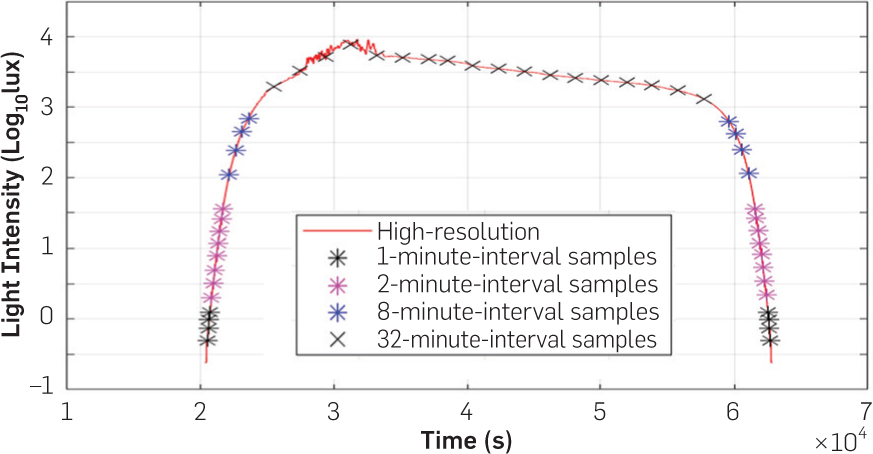

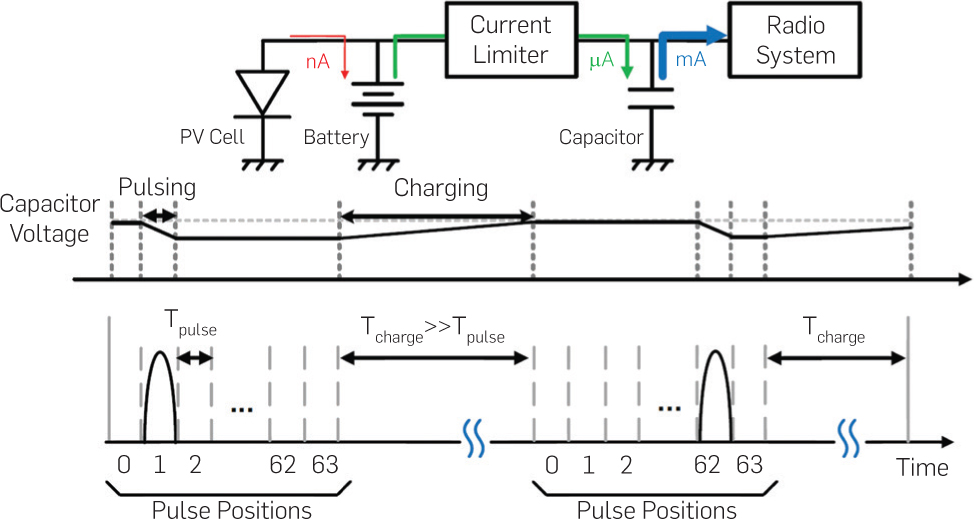
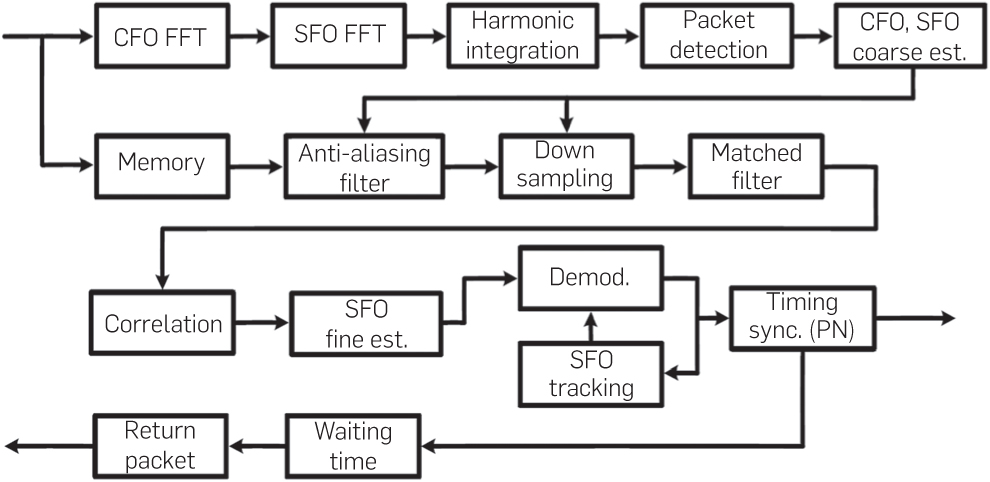
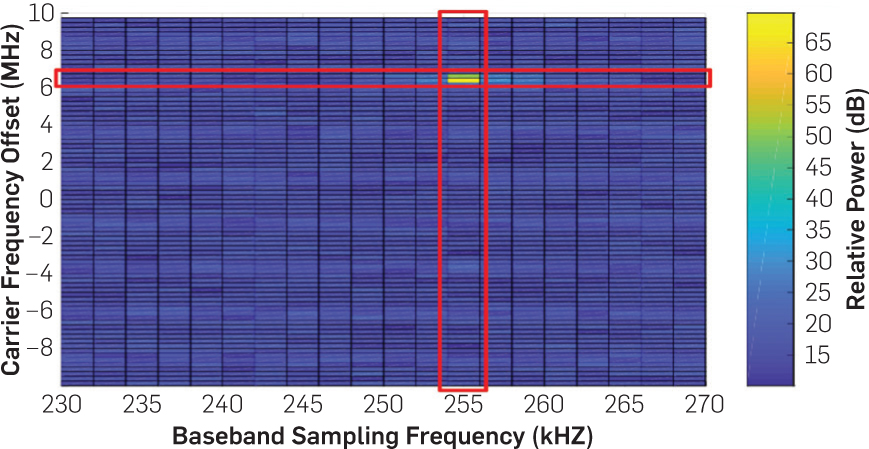

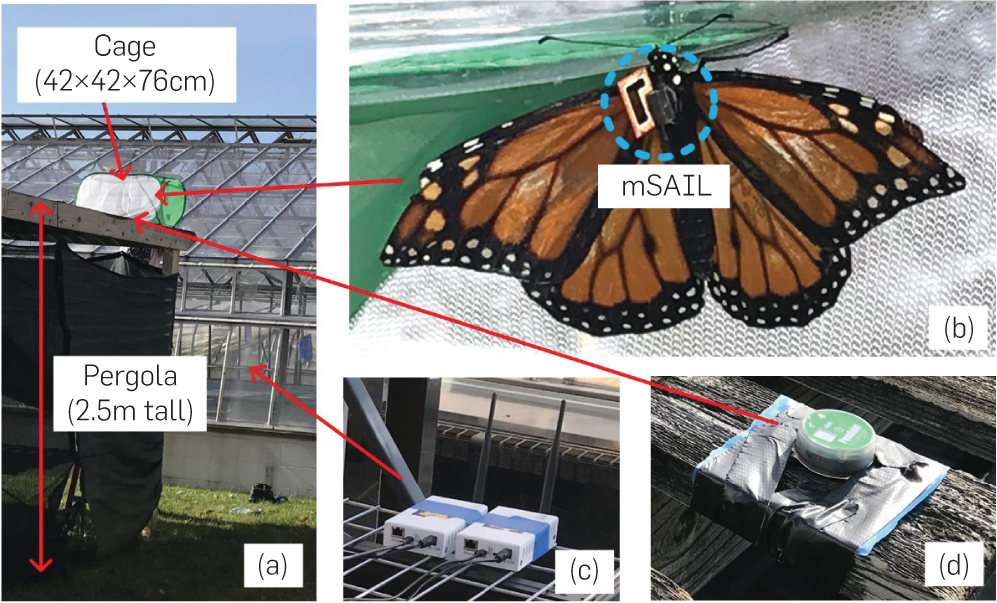
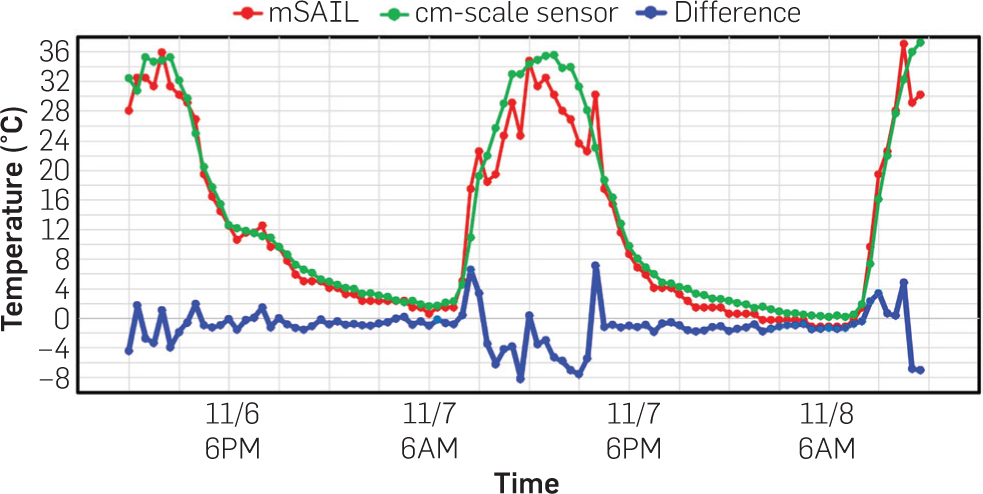
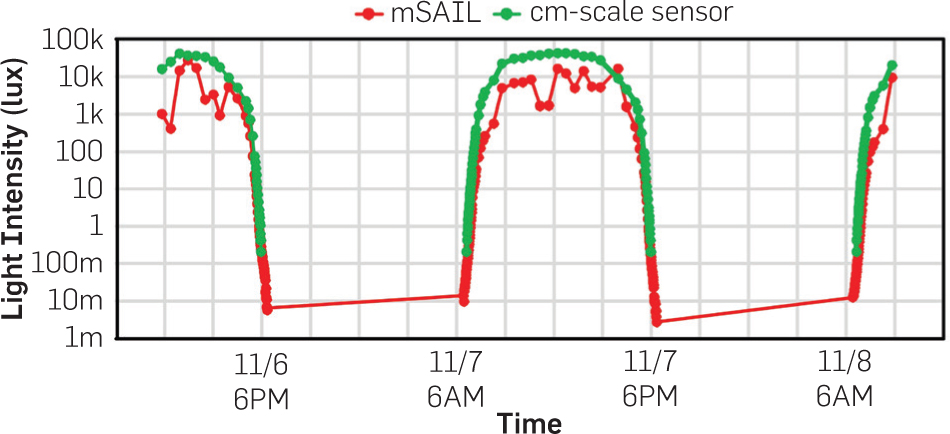
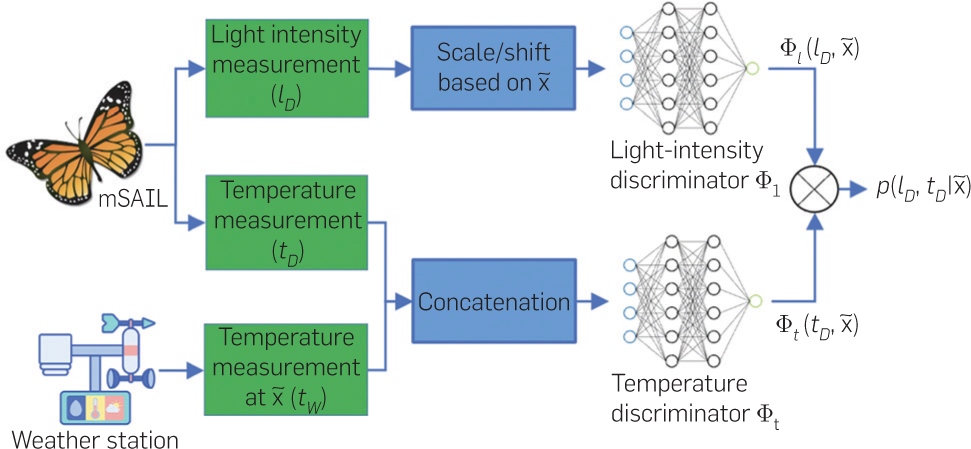
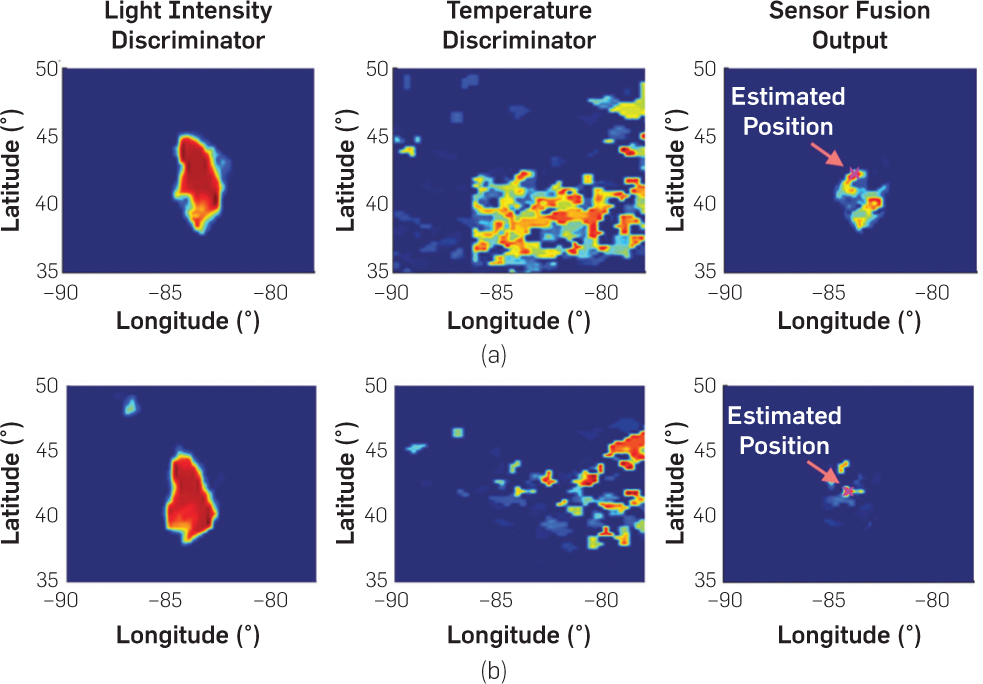
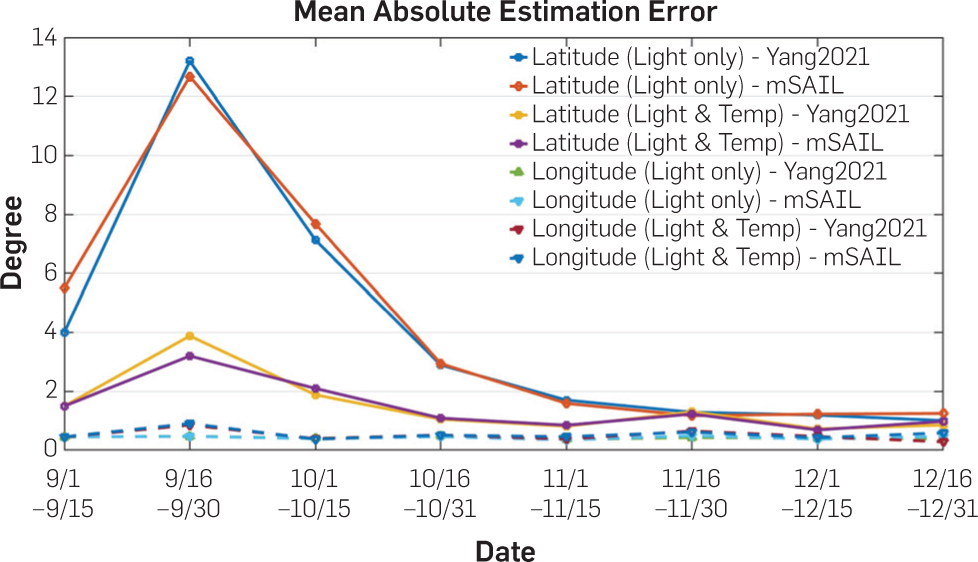



Join the Discussion (0)
Become a Member or Sign In to Post a Comment